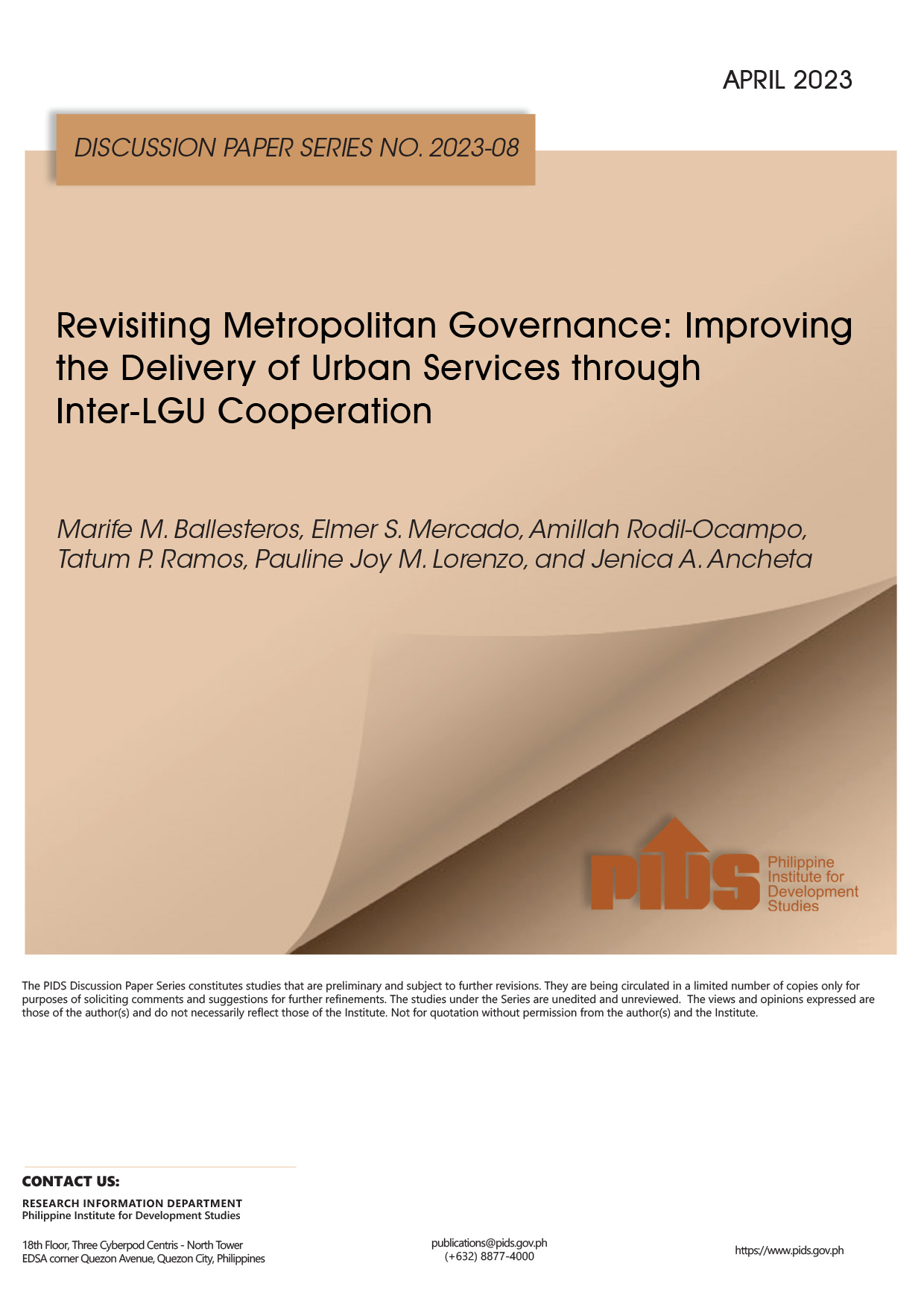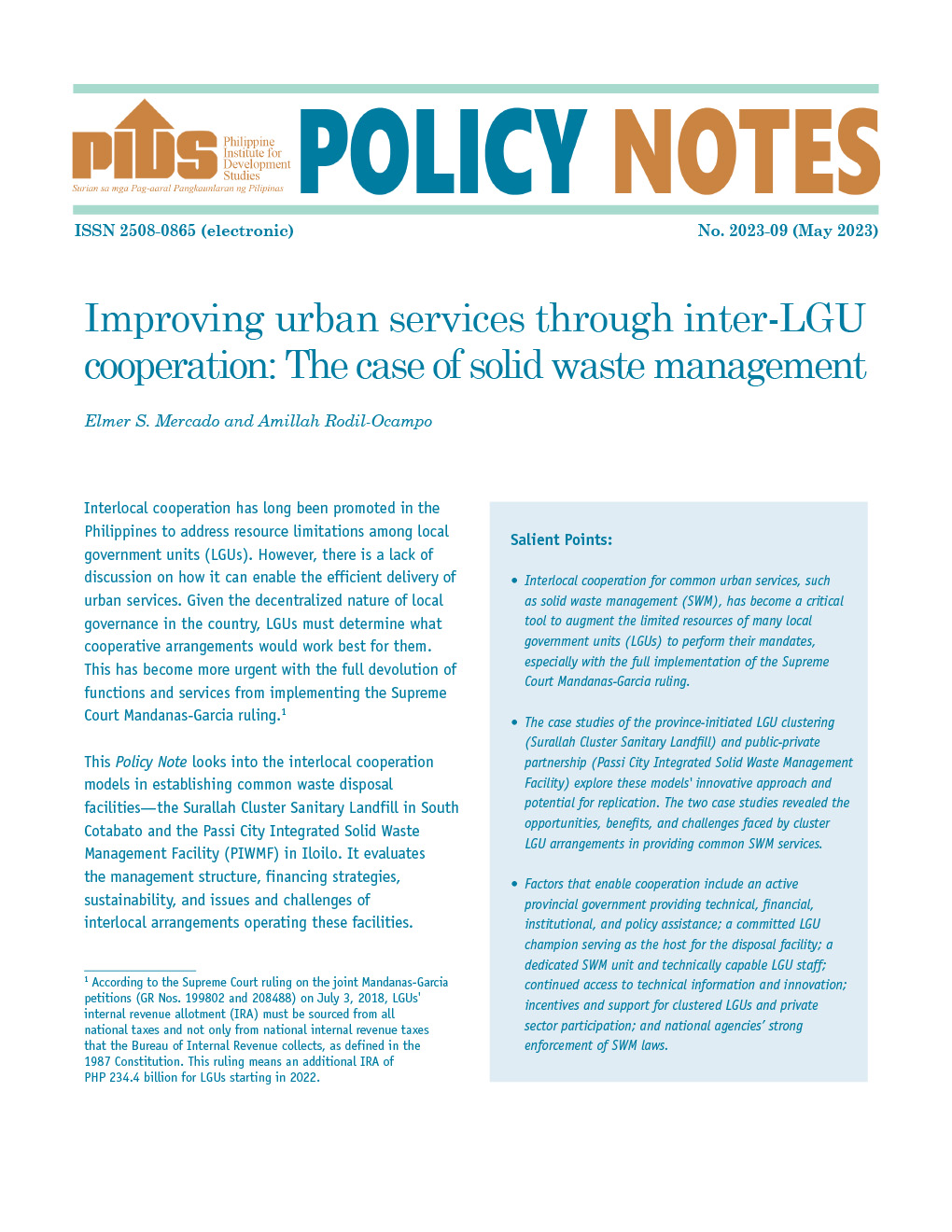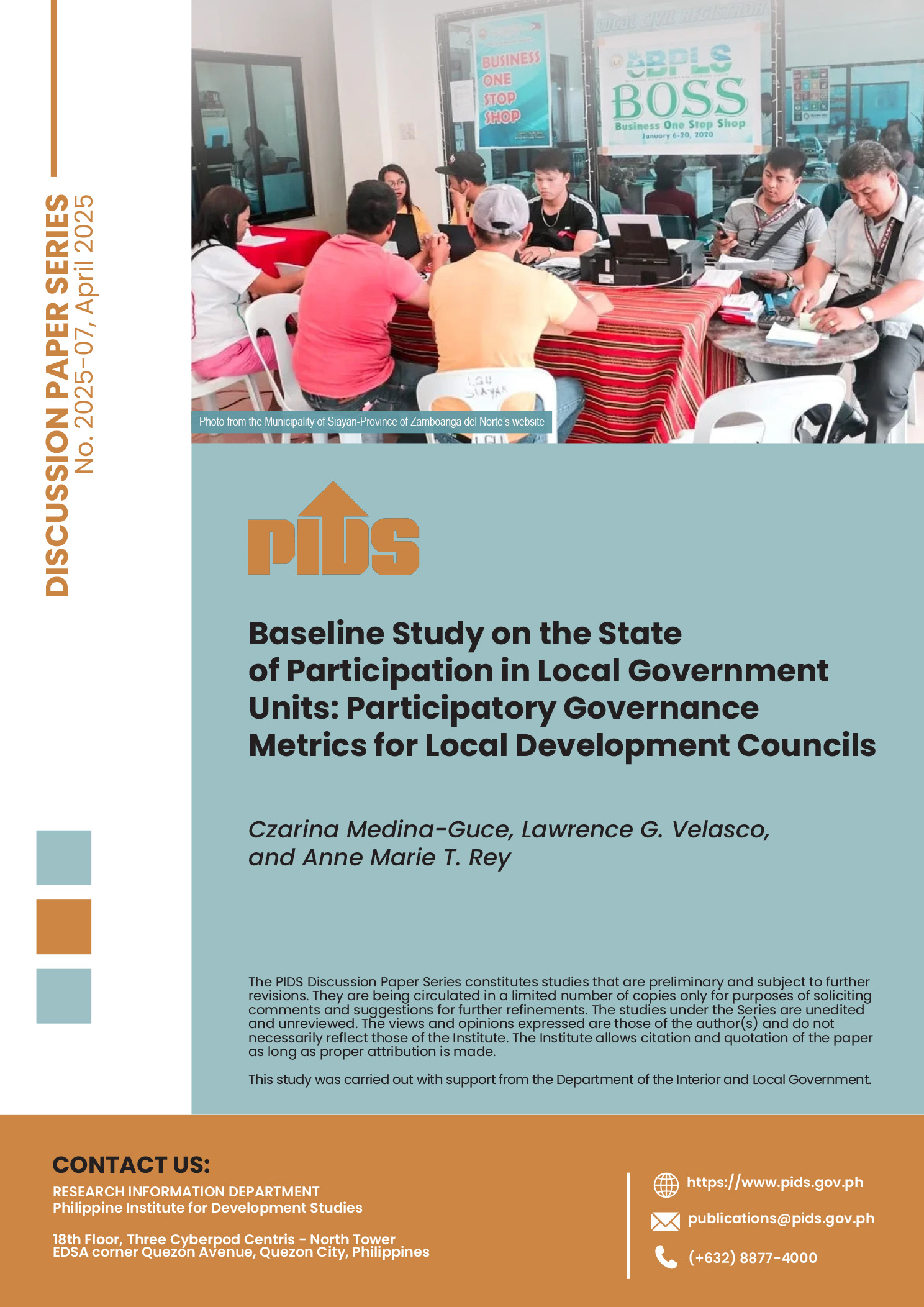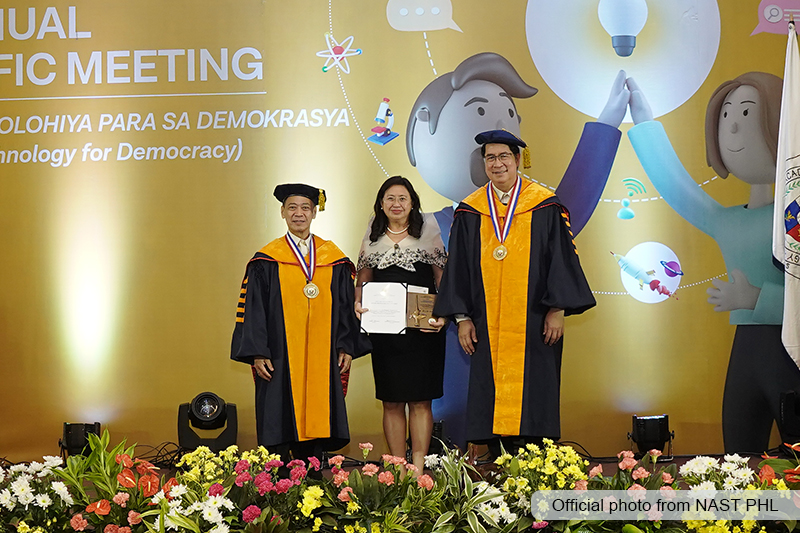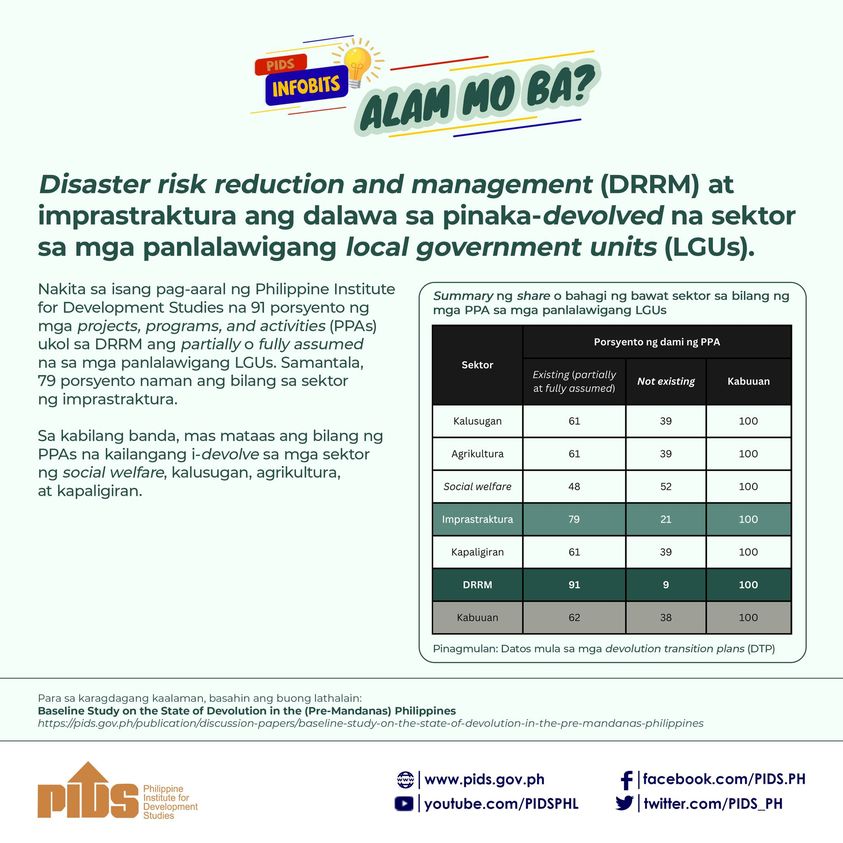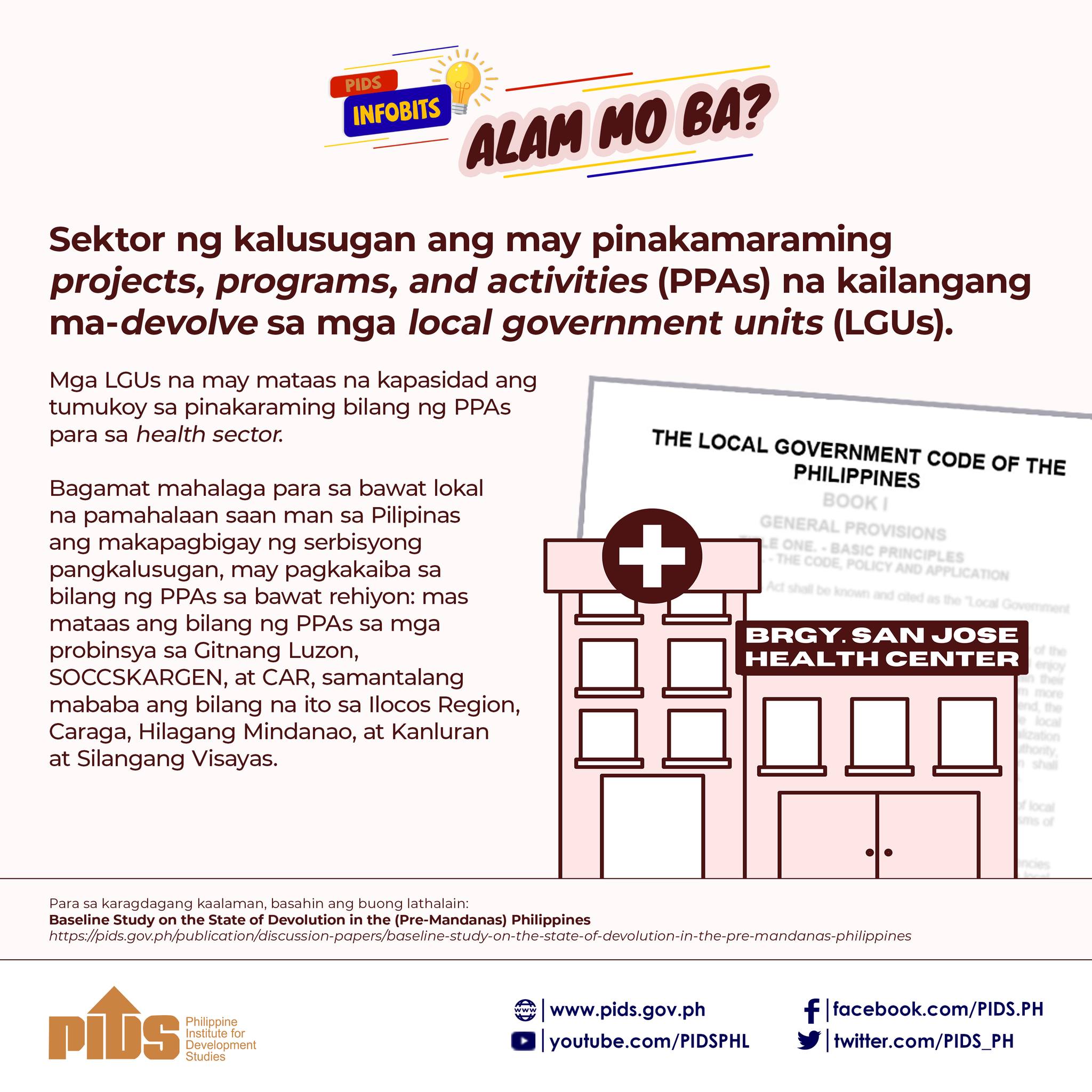
Implementing results matrices in local government units is key to measuring their contributions in achieving the Philippine Development Plan (PDP) 2017–2022 and the Sustainable Development Goals.
This is according to Director Anna Liza F. Bonagua of the Department of the Interior and Local Government’s (DILG)'s Bureau of Local Government Development during a webinar organized by the Philippine Institute for Development Studies (PIDS).
The virtual event featured the PIDS study titled “Assessment of the Provincial/NCR Local Government Unit Result Matrices (P/NCR LGU RMS) in the Localization of the Philippine Development Plan (PDP) 2017–2022 and the Sustainable Development Goals (SDGs)” authored by PIDS Research Fellow Charlotte Justine Diokno-Sicat, Research Analysts Angel Faye Castillo, and Ricxie Maddawin.
The study assessed the effectiveness of the results matrices in the government's localization efforts. It also examined how government efforts fared in ensuring that plans in the provinces and National Capital Region (NCR) stay aligned with national development goals.
The results showed that the results matrices were effective and “well-received” by local officials. It also found high compliance in LGUs, with 97.4 percent for provinces and 94.1 percent for NCR.
“The high compliance of LGUs and the findings of the PIDS-DILG study attest to the relevance and usefulness of the results matrices,” Bonagua said.
She added that the positive response of LGUs is a manifestation of their appreciation of the tool, which enabled them to see the national government's priorities and track their progress in achieving the national development goals.
Bonagua was hopeful that this development would lead to greater availability of local data. She also explained that the results matrices would serve as a strategic tool in tracking and monitoring LGU performance under the revised PDP and implementing the Mandanas ruling in the coming years.
She expressed DILG’s commitment to pursuing the “enhancement of relevant policies and guidelines and instruments to institutionalize the results matrices in local development planning and governance processes”.
“We hope for the continued support of our partner agencies and LGUs as we continue to embark on the improvement of the LGU results matrices to increase their effectiveness in assessing LGU contribution to the national development objectives, in line with the whole-of-nation, whole-of-government approach in our journey toward the realization of the AmBisyon of every Filipino of a Matatag, Maginhawa, at Panatag na Buhay,” she concluded. ###
You may watch the webinar at https://www.facebook.com/PIDS.PH/videos/2638614013108939. For more videos of PIDS events, go to https://www.pids.gov.ph/videos.
This is according to Director Anna Liza F. Bonagua of the Department of the Interior and Local Government’s (DILG)'s Bureau of Local Government Development during a webinar organized by the Philippine Institute for Development Studies (PIDS).
The virtual event featured the PIDS study titled “Assessment of the Provincial/NCR Local Government Unit Result Matrices (P/NCR LGU RMS) in the Localization of the Philippine Development Plan (PDP) 2017–2022 and the Sustainable Development Goals (SDGs)” authored by PIDS Research Fellow Charlotte Justine Diokno-Sicat, Research Analysts Angel Faye Castillo, and Ricxie Maddawin.
The study assessed the effectiveness of the results matrices in the government's localization efforts. It also examined how government efforts fared in ensuring that plans in the provinces and National Capital Region (NCR) stay aligned with national development goals.
The results showed that the results matrices were effective and “well-received” by local officials. It also found high compliance in LGUs, with 97.4 percent for provinces and 94.1 percent for NCR.
“The high compliance of LGUs and the findings of the PIDS-DILG study attest to the relevance and usefulness of the results matrices,” Bonagua said.
She added that the positive response of LGUs is a manifestation of their appreciation of the tool, which enabled them to see the national government's priorities and track their progress in achieving the national development goals.
Bonagua was hopeful that this development would lead to greater availability of local data. She also explained that the results matrices would serve as a strategic tool in tracking and monitoring LGU performance under the revised PDP and implementing the Mandanas ruling in the coming years.
She expressed DILG’s commitment to pursuing the “enhancement of relevant policies and guidelines and instruments to institutionalize the results matrices in local development planning and governance processes”.
“We hope for the continued support of our partner agencies and LGUs as we continue to embark on the improvement of the LGU results matrices to increase their effectiveness in assessing LGU contribution to the national development objectives, in line with the whole-of-nation, whole-of-government approach in our journey toward the realization of the AmBisyon of every Filipino of a Matatag, Maginhawa, at Panatag na Buhay,” she concluded. ###
You may watch the webinar at https://www.facebook.com/PIDS.PH/videos/2638614013108939. For more videos of PIDS events, go to https://www.pids.gov.ph/videos.

